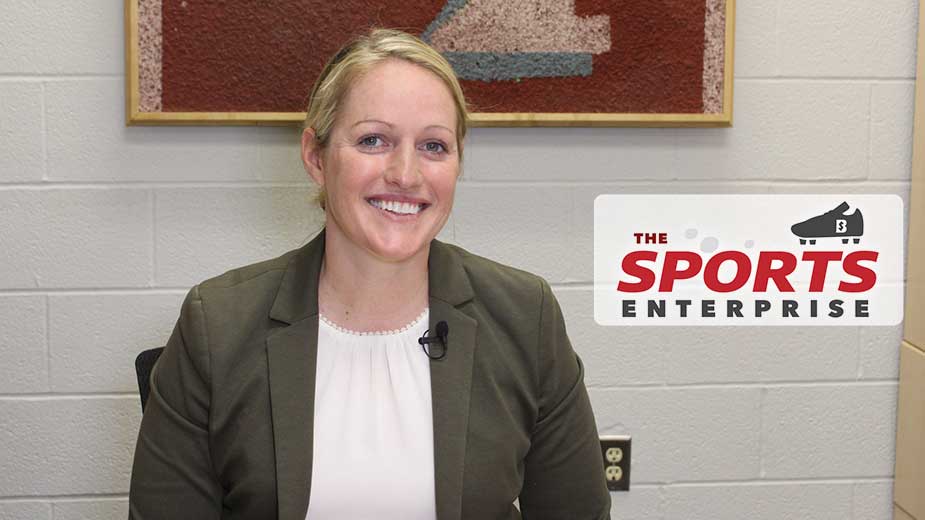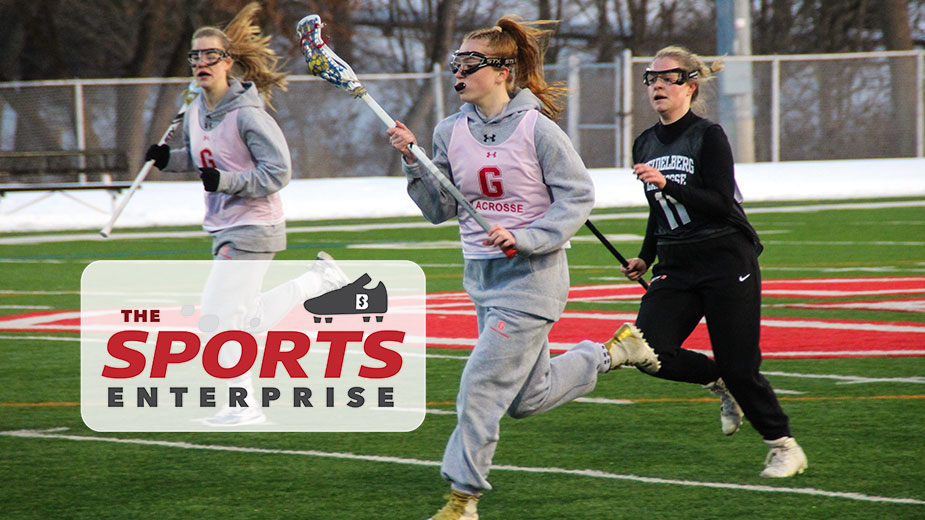NCAA Transfer Portal Creates ‘Wild, Wild West’ for YSU Basketball Teams
YOUNGSTOWN, Ohio – More than 1,500 men and almost 1,100 women have entered the transfer portal for NCAA Division I basketball.
Under the new transfer portal system, student-athletes notify their institution of their intent to transfer. Once that happens, the school has 48 hours to enter them in the portal.
And now student-athletes in most sports don’t have to sit out a season after transferring to a new school, adding an extra layer to the recruiting landscape.
“It’s just kind of created a wild, wild west-type atmosphere in college sports in general, but especially men’s and women’s basketball this year since it’s new,” says Youngstown State University head women’s basketball coach John Barnes.
As of Monday morning, almost 20,000 student-athletes in the top two levels of all NCAA sports have declared they are seeking a new place to display their skills.
The portal began in October 2018 as an effort by the NCAA to streamline the university compliance process, adding transparency from start to finish and empowering these young people to make their desires known to other prospective colleges. Students shares their academic and athletic records to the portal.
Before the portal was created, schools wanting to communicate with a student at another university had to ask for permission, which initiated a lengthy process, says Emily Wollet, YSU’s associate athletic director.
Movement from university to university has been accelerated by the new transfer rule the NCAA approved in April that allows all college athletes to transfer one time as an undergraduate without having to sit out a season. Prior to the rule, athletes had to sit out one season in some sports, including football and basketball.
To be eligible to transfer, a student cannot have transferred prior to this request unless their sport no longer exists at their university, and have medical or financial hardships. Those intending to transfer from a fall or winter sport have to state their intentions by May 1. The deadline for spring athletes will be July 1, starting in 2022.
As long as all the rules for transferring are met and there is no negative impact to academics, Wollet sees the portal continuing.
“I think this will be interesting to see how this affects [Academic Progress Rate] and graduation rates,” she says. “Now if five, 10 years from now they start tanking and not graduating, then I think they might have to revisit this.”
Academic Progress Rate measures eligibility and retention for student-athletes during each academic term. Those on the YSU women’s basketball team have been among the best in cumulative grade point average for nine of the last 10 seasons – ranking second in the nation in the 2019-20 campaign.
Incoming recruits must meet the academic standards of the program, but can ultimately hedge the team into a postseason tournament appearance, Barnes says. Six left the program, but five matriculated into YSU during the offseason (not including high school signees) — not an uncommon number for programs around the country. Schools such as Texas Tech, Syracuse, Detroit Mercy and Northwestern State had as many as 10 transfers.
“We’ve had some players leave that probably wouldn’t have normally and we were able to get some transfers that maybe we wouldn’t have since they would’ve had to sit,” says Barnes, who has players from schools such as Marshall, Robert Morris and Duquesne. “I never really liked the transfer situation.
“I really didn’t really want our players transferring and I didn’t really take a lot of transfers, but it’s kind of forced us into getting involved in that situation.”
Rosters will change year by year, something YSU head men’s basketball coach Jerrod Calhoun says he must embrace. His team added four transfers, along with three high school senior signees in November.
“At the end of the day, basketball is going to come and go, so we’re very, very proud that these kids are getting their degrees here from YSU,” Calhoun says. “We had the highest GPA in the history of our program in the fall. Hopefully we can finish up in the spring, but I can’t blame anybody for wanting to try something else.”
Some transfers land at schools in the Big 10, Big 12, Pacific-12, Southeastern and Atlantic Coast Conferences – better known as the power five, the money makers of collegiate sports. Calhoun, who was on the men’s basketball staff of Big 12 member West Virginia University prior to becoming a head coach at Fairmont State University and then YSU, understands the economic implications of the transfer rule and portal.
There’s an adjustment for a student-athlete vaulting from a YSU, Cleveland State, Akron or Kent to a school like Ohio State, West Virginia or Syracuse, Calhoun adds.
How will playing time, overall happiness and academics fare after transferring? Will these players graduate? Those questions aren’t a concern to the YSU mentor, who is coming off back-to-back winning seasons.
“I think all of those things are to be determined,” Calhoun says. “College sports are wild. Basketball is wild. You’ve got to saddle up. YSU is in a good place right now. I feel very confident about our basketball team that’s coming back.”
Adding another twist to the situation is the NCAA giving all athletes an extra year of eligibility for only the 2021-22 school year, including seniors. Those students do not count against the maximum number of scholarship players a team can have in a season – 13 for men’s basketball and 15 for women’s basketball.
“If that student goes to transfer somewhere else, they have to count at that next institution,” Wollet says. “If a lot transfer out, they’ll take the spot from the incoming [freshmen] students. I think junior and seniors could feel that effect in high school.”
The portal and transfer rule are ultimately about creating options for players and bypassing the irreconcilable differences that occasionally arise between coaches and players, he says. It comes down to a player being happy where they’re playing.
“You have to have two feet in where you’re at, and if you don’t, you want to go find that somewhere else,” Calhoun adds. “I’ve always been a guy who, wherever I’m at, I’m going to make it the best job, work a lot of hours and work really hard. I’m gonna be happy. That’s what I want for my players.”
It’s been an interesting year for college athletes.
“This year is a very different year on so many fronts,” Calhoun says. “I think the portal will definitely slow down, but I think it’s the hottest topic in college athletics right now.”
Pictured: YSU associate athletic director Emily Wollet says that while the the NCAA transfer portal has streamlined players changing schools, it’s also brought challenges for athletics programs.
Copyright 2024 The Business Journal, Youngstown, Ohio.



